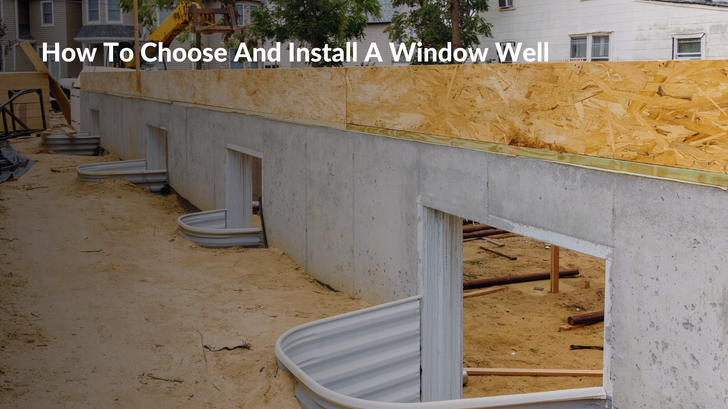Window wells are a great addition to allow sunlight and ventilation into an otherwise closed-off and dark space. Most basement windows are below grade, so window wells are installed to create a safe space between the window and ground. Most window wells include a drainage system or gravel to help the well stay dry. Standard sized wells come in many shapes, sizes, and materials. The most common materials for window wells are corrugated steel or plastic.
How do you choose a window well size?
The steps to measuring for a window well are actually quite simple. Measure the window's length and width, then add six inches to the width and eight inches to the length for the well's dimensions. The well itself should be deep enough for the window well wall you've picked out and plan to install.
Finished basements are typically required to have egress window wells, which ensures there is a quick escape route available in case of an emergency. This is a great addition to the list of other benefits a window well has to offer. Not only will it make sure your basement receives natural light and stays well ventilated, your window well will keep you and your loved ones safe in the event of an emergency.
To make sure you can utilize your window well in case of an emergency, your egress window well should be large enough for an adult to fit in. IRC requirements state that it must provide 9 square feet of ‘floor area’.
In order to be an egress compliant window well, they must include an egress window that meets these four International Residential Code (IRC) criteria:
How do you install your new window well?
If you’re installing a brand-new basement window, it's a good idea to install the window well first to avoid any damage to your new glass panes. Follow the steps below to understand the basic installation process.
Check Backfill
Make sure the dirt is backfilled only up to the distance the window well will protrude from the wall before starting the installation.
Check the Positioning
Test the positioning by leaving enough space to fit the window well comfortably where you intend to install the well. Your window well should be a minimum of 10 to 12 inches below the opening of the window. Leave at least 3 inches of the window well above the surface grade as well.
Measure
Remove the window well and measure its exact dimensions. You'll need to plan to dig roughly 10 inches down from where you intend to place the window well.
Dig
Dig a hole according to the dimensions of the window well. It is best to leave 5 or 6 inches on either side, making it easier to place the well into the hole before filling it in.
Place the Window Well and Measurements
When you place the window well in the freshly dug hole, make sure it is flush with your home’s foundation. Confirm that the well is centered before making its placement permanent.
Level It
Ensure that the well is flat with your level. Measure 3 inches down from the top of your well to make sure the ground is level with your well.
Anchor To Wall
Once it is level, you can screw in the anchors to begin the steps to permanently attach your new well. Concrete anchors and a hammer drill work best for this installation step.
Waterproof the Seals
Use a silicone sealant or concrete expansion joint to create a waterproof barrier along your well’s sides.
Secure Anchor to the Wall
Once the anchors are in position, place your well and secure the window well to the anchors. Sealant will ooze from the sides of the window well or the expansion joint material marking where the window well meets it.
Cut Away Excess Gasket
If necessary, cut away the excess parts of the gasket that are visible on both sides of the window well. If you used a sealant, use a rag or damp sponge to clean up the excess product.
Add Drainage Rock
There are many types of rocks that can be used for drainage after your window well is installed. Drainage rock will help filter water down into the dirt below, preventing it from pooling in front of the basement window.
Backfill the Dirt
Remove the protective coating on your newly installed window well, and begin to replace the dirt.
Install a Ladder
Check if your window well’s depth requires you to install a ladder. These aid in safety, in case of an emergency. Your local residential bylaws will confirm if a ladder is necessary.

 Lifetime Warranty On All WWS Covers
Lifetime Warranty On All WWS Covers
 Free Shipping On All Products
Free Shipping On All Products





 (262) 633-3707
(262) 633-3707

 info@windowwellsupply.com
info@windowwellsupply.com
